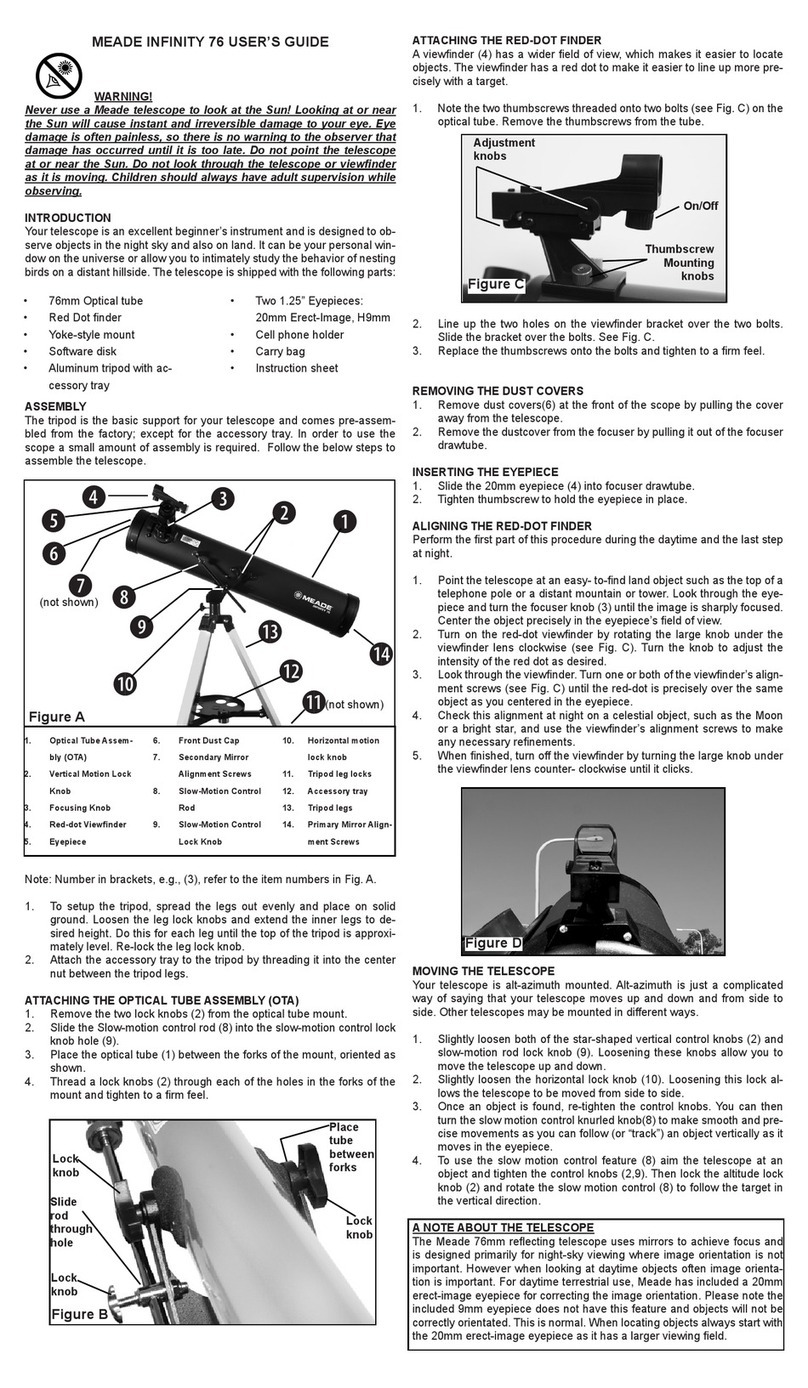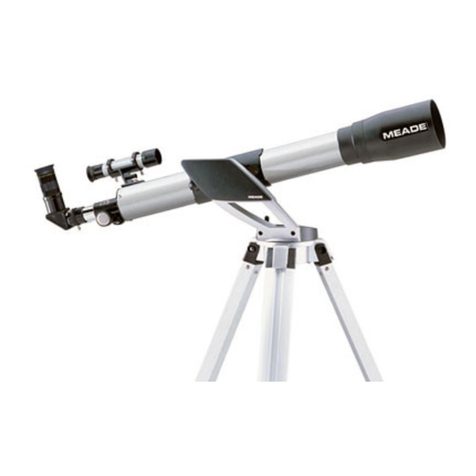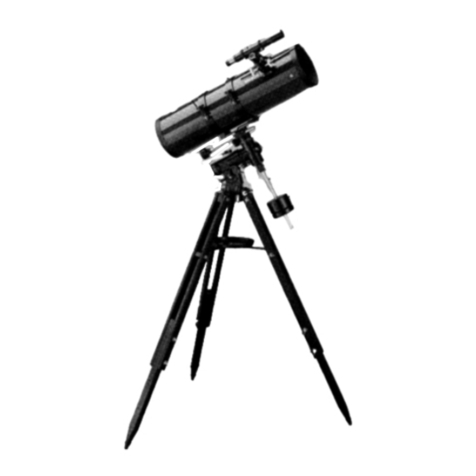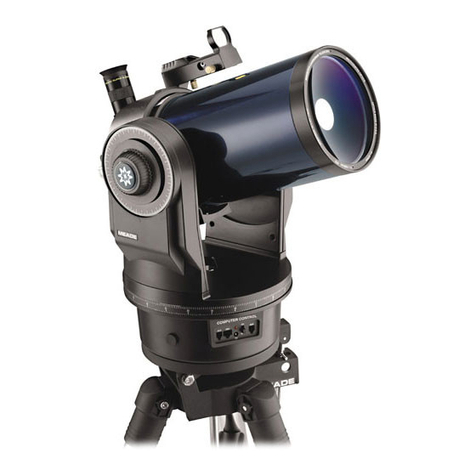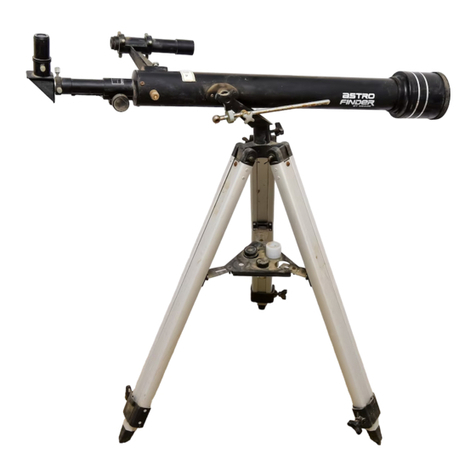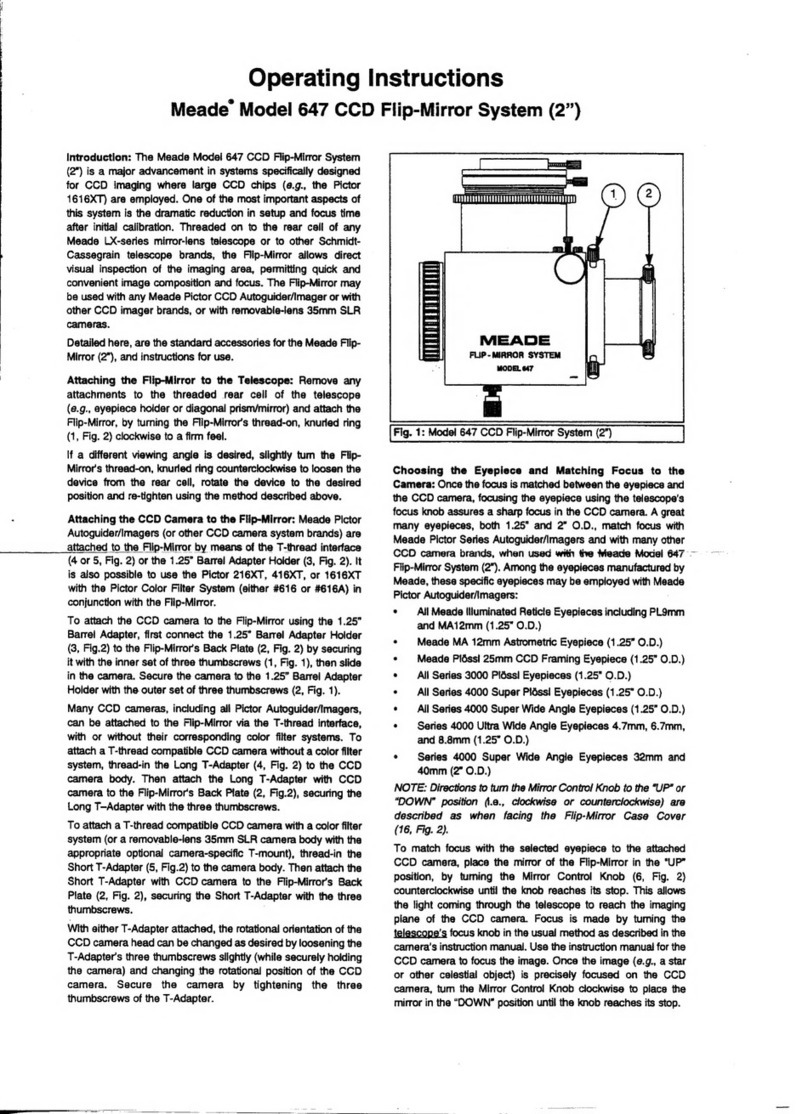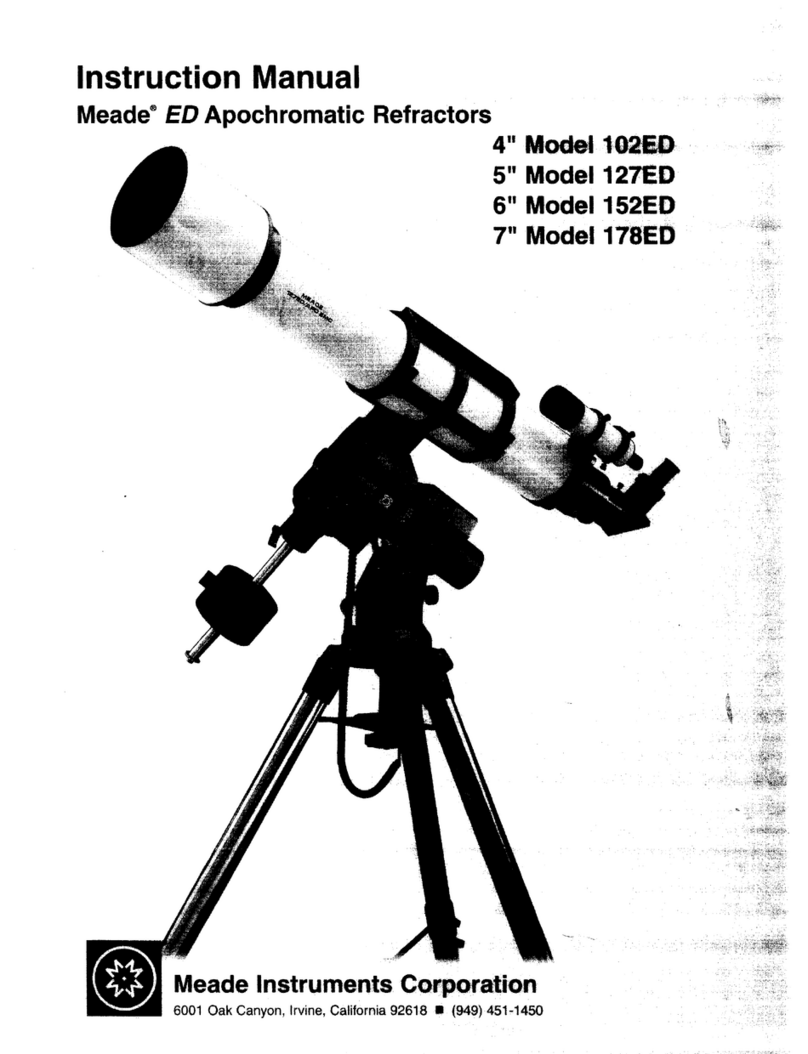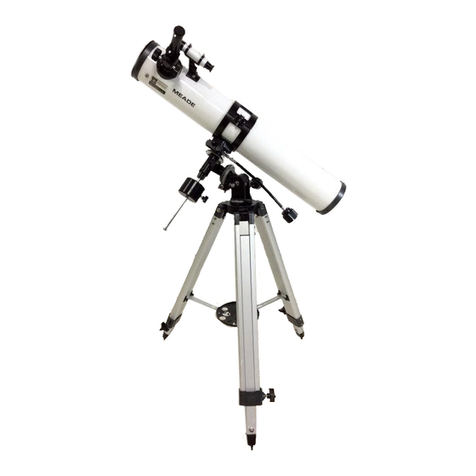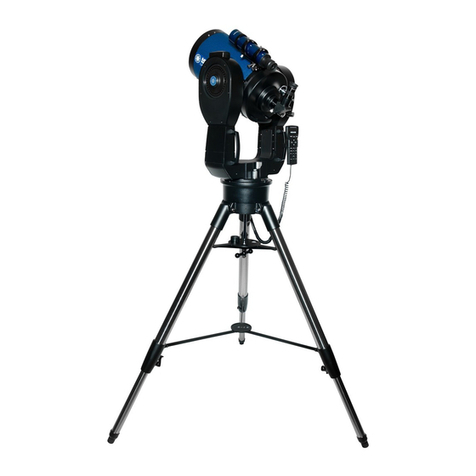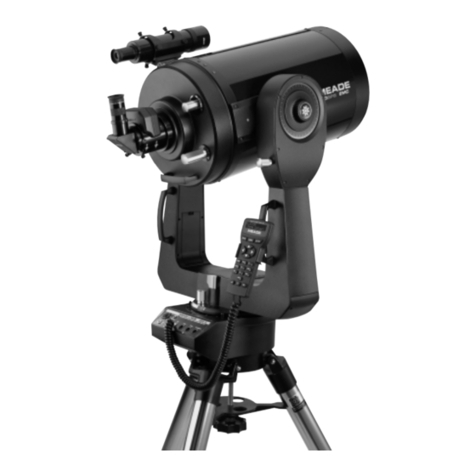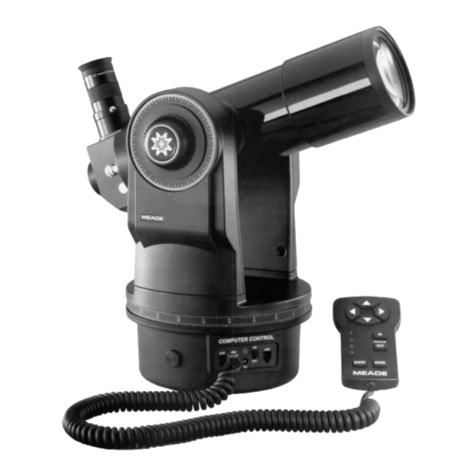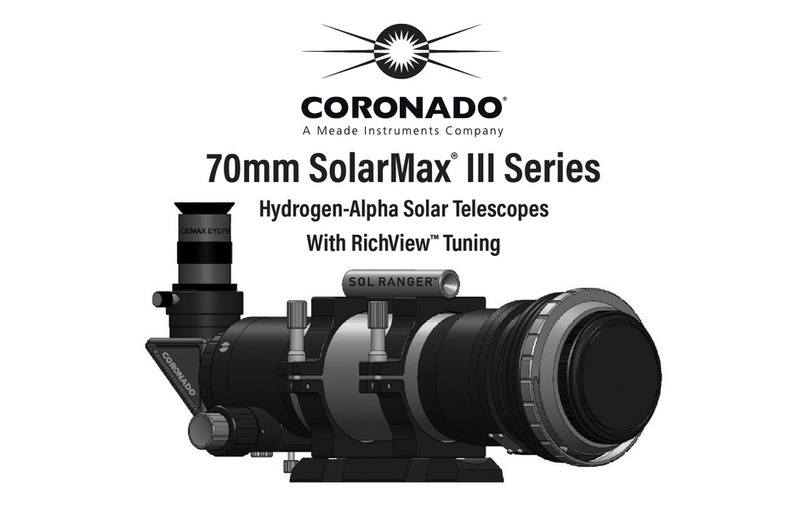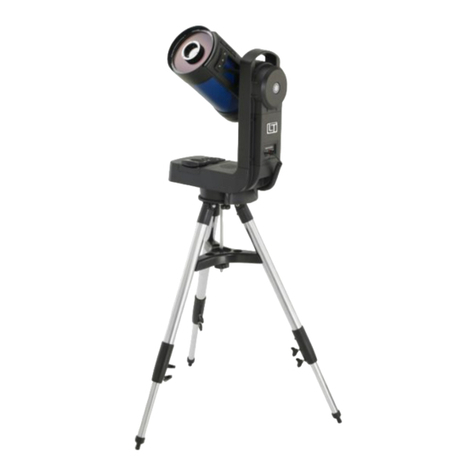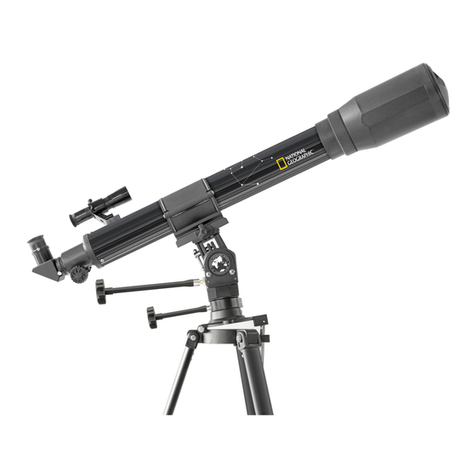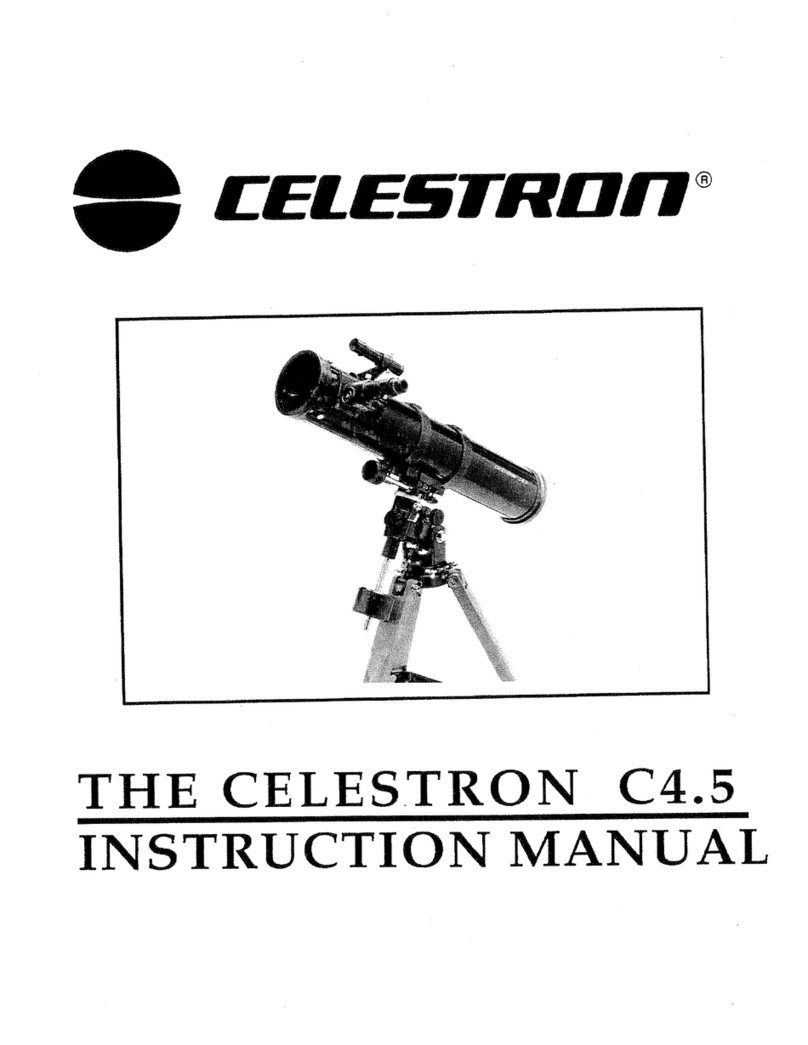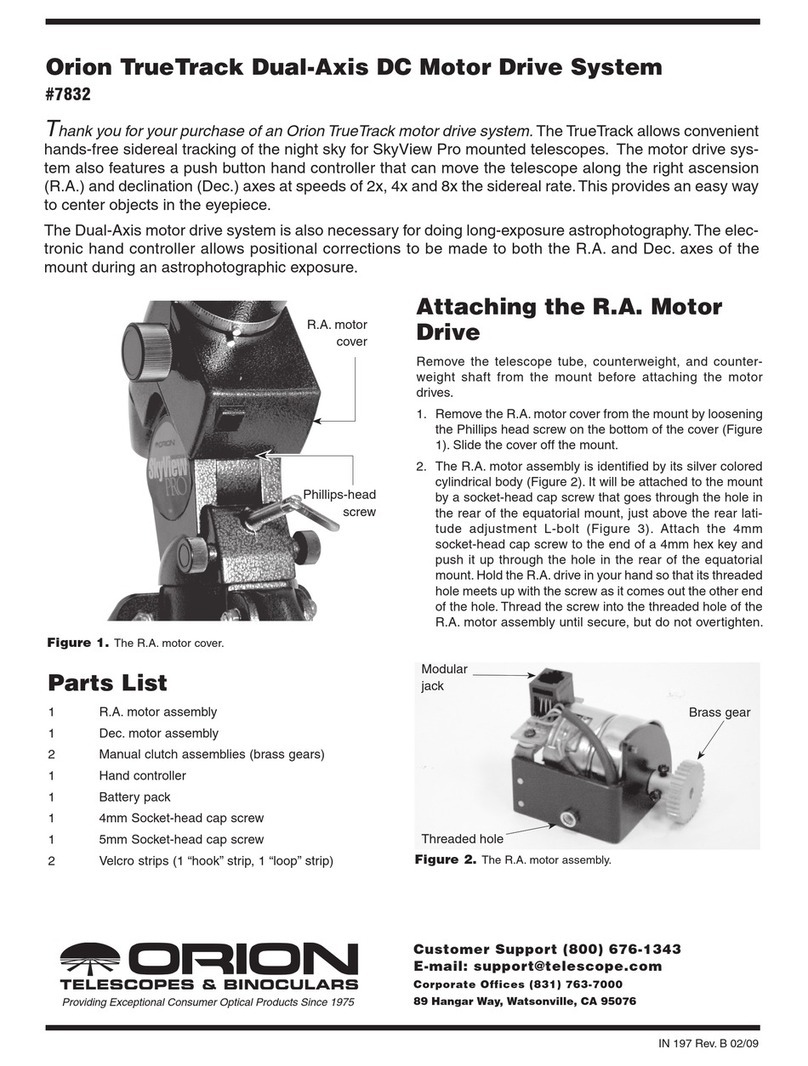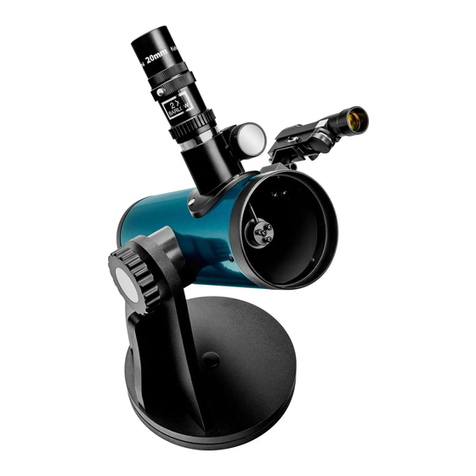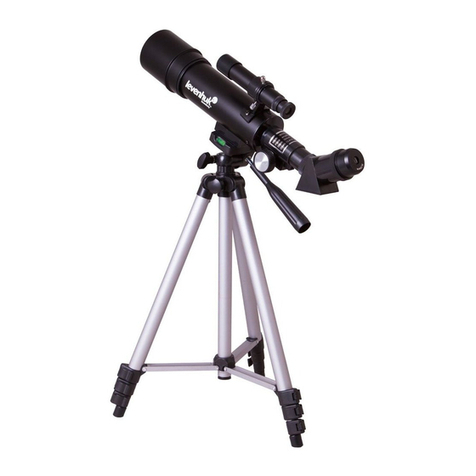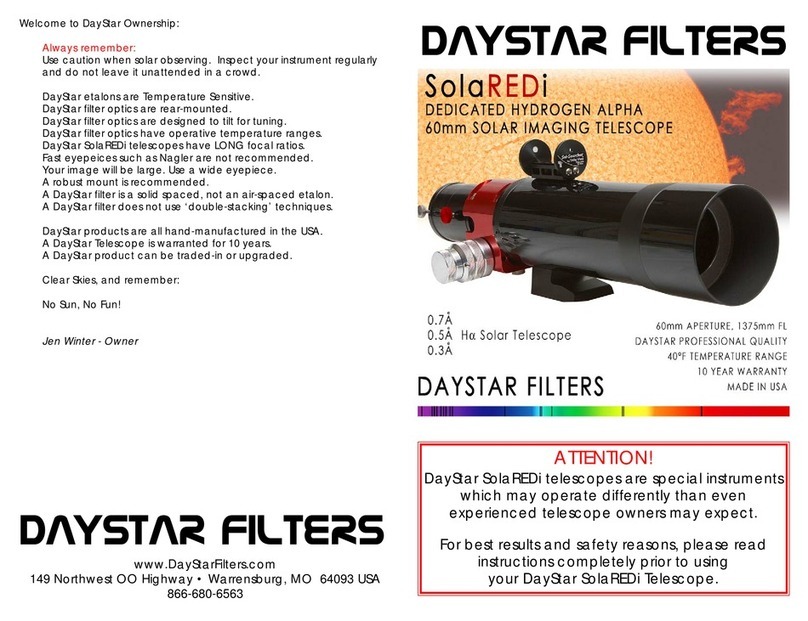
- 10 -
The
AC Adapter has a 25 foot cord, which should reach most observinc locations 'from an indoor plug. If the
cord is too short
to
reach the telescope's location, optional
extension
cords
are available from your Meade
dealer in 25 foot lengths. Do not plug the AC Adapter into the enc of a standard extension cord to extend the
observing range of the telescope.
To use the AC Adapter, plug it into a standard indoor AC outlet. Piug the end of the cord into the power input
socket (#9, Fig. 1). Check that the Northern/Southern (N-S) switch (#4, Fig. 1) is set for the hemisphere of the
observing location and then turn the "On/Off" switch
(#3,
Fig.1)
10
-On".
{Remember: The N-S switch must be
correctly set
QffiQr:a
the telescope is turned on.} The power indicator light
(#2,
Fig.
1)
should now be lit and the
telescope tracking. If the Power Light is not working, see "Troubteshootino the LX6 Drive System", page 18.
2. DC Operation
The
8"
and
10"
LX6 telescopes operate on DC current and may
tr.;
powered directly from a
12
volt battery or
power cell. The LX6
drive
system normally draws about .5
arrc in
star-dare operation with the Electronic
Command Center
(ECG)
in use. Maximum current usage is
.8 amo
when all optional accessories are being
used.
if
the. telescope is being powered from
a
fully charged car
battery
in
good
condition, the current drain is
negligible and the telescope may be used all night without fear of
<::
"dead battery".
The LX6 Schmidt-Cassegrains are supplied with a DC power cable for use with a car battery, To use the DC
power cable, connect the cable to the power socket (#9, Fig.i)
on
the power panel of the LX6, and the
cigarette plug to your cigarette lighter. Be sure that the N-S switch
is
correctly set and that the On/Off switch
is "On". If the power indicator is not lit, see "Troubleshooting the LX5 Drive System", page 18.
3. Battery Pack
Also supplied with the telescope is a small Battery Pack with
cord. This
Battery Pack holds
10
size AA
batteries and is intended for short observing sessions. Rechargeable batteries are recommended. Note:
When the telescope is being powered by the Battery Pack without the EGC, the power usage is about
.35
amp or
30%
less than normally. required.by the telescope when used with the
ECC (.5
amp).
E. 9 X 60 Polar
Viewfinder
In addition to being an excellent 9 X 60 viewfinder, the Meads Illuminated Reticle Polar Viewfinder is
designed
to
be used as an optical guide for finding the celestial pole.
2.
Focusing the Viewfinder
1. The
Illuminated
Reticle
To assure safe arrival, the Polar Viewfinder is shipped with the bulblb<rttery holder. not mounted on the
viewfinder. To attach, thread the bulblbattery holder into the ho}:; located
just
under the eyepiece of the
viewfinder.
To turn on the reticle, rotate the knurled switch on the bulblbattery holder [:) the "on" position. The brightness
is adjustable by rotating the knurled switch. To prolong battery life, rernernoer
to
turn off the reticle when not
in use.
To replace the batteries in the Polar Viewfinder. remove the bulb battery holder from the Polar Viewfinder.
Separate the two halves of the bulblbattery holder by unthreadiop the r•••.o pieces, exposing the batteries.
After replacing the batteries, thread the two halves of the butb/banery ho~.jer together, and replace the unit
onto the Polar Viewfinder.
The Meade Polar Viewfinder has been pre-focused at the factory. However, not everyone has perfect vision
and slight adjustment is sometimes necessary to obtain maximum certormance.
